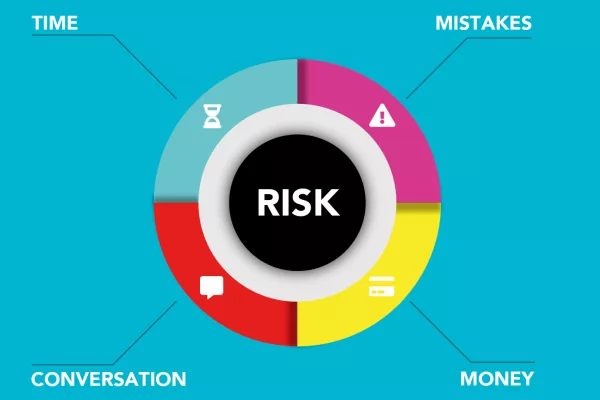Picture this: a potential customer adds items to their online shopping cart, ready to make a purchase. But when they reach the checkout page, frustration sets in. Something has gone wrong and they now get the ‘Transaction Declined’ or ’Invalid Card Information’ message. They really want the items, so they try again, however, the ‘Payment Error’ message keeps popping up.
They don’t know why, but the payment integration has malfunctioned and they cannot finish their purchase. That angers them of course, but they still need the items, so they will abandon their cart with resentment toward your shop and seek out a competitor instead.
This scenario is more common than you might think. Whether the submitted payment is loading endlessly, or the customers end up with incorrect pricing and total amounts, or even multiple charges and double transactions, inadequate payment integration may cost you more than just a purchase. People are very sensitive when it comes to their payment information, and if they experience payment or credit card issues, they might abandon your brand forever. And once lost, trust is difficult to regain.
Knowing this, the reliability of a fully functional payment integration gains in importance. So, what payment integrations are good for your eCommerce, what are payment integration best practices, and what is the best way to keep them working flawlessly 24/7?
Payment Integrations 101: What Are They and Why They Matter
Think of a payment integration as a bridge between a completed purchase and payment processors, a tool for facilitating seamless and secure transactions for customers. Thanks to them, businesses can accept various forms of payment, including credit cards, digital wallets, and bank transfers.
Payment integration is what streamlines the checkout process, enhances user experience, and ultimately drives sales. Moreover, by offering diverse payment options and ensuring swift transactions, payment integrations foster loyalty and trust in the brand.
All this is done seamlessly and behind the scenes; the customers don’t even have to think of the complexities of digital payments and its processes, they just have to submit their credit card details. Once a customer completes a purchase, the payment integration securely transmits the transaction details to the selected payment processor, which then verifies the payment method and processes the transaction in real time.
Types of Payment Integrations – Find the Best Fit
Payment integrations come in various forms, each offering a unique set of features and functionalities that can cater to different business needs and preferences. And based on the intricacies of your business model, you can easily choose the one that has the most benefits for your online store.

There are 4 types of payment integration to consider:
- Hosted Payment Gateways
These gateways redirect customers to a secure payment page hosted by a third-party provider during the checkout process. This off-site approach minimizes security risks for the merchants and simplifies PCI compliance (Payment Card Industry Data Security Standard).
Benefits: simplified PCI compliance, enhanced security, and quick setup.
Some examples of hosted payment gateways are PayPal Standard, Stripe Checkout, and Square Checkout.
- API-based Payment Gateways
API (Application Programming Interface) integration allows you to embed payment functionality directly into your website or application. This offers more customization options and a seamless checkout experience while maintaining security.
Benefits: enhanced customisation options, seamless integration, and real-time data (real-time transaction updates).
The API-based payment gateways that are often used are Braintree, Authorize.Net, and Adyen.
- Self-hosted Payment Gateways
With self-hosted solutions, merchants host the payment page on their own servers, providing complete control over the checkout process and user experience. However, this often requires higher levels of security and compliance management.
Benefits: full control over the checkout, data ownership (access to all customer information), and flexibility in integrating with other systems.
Some of the self-hosted payment gateways that many online stores use are WooCommerce Payments, Magento Payment Gateways, and OpenCart Payments.
- Third-party Payment Processors
Third-party payment processors are standalone platforms that handle payment processing on behalf of merchants. They offer convenience and ease of setup, but you may have less control over the checkout experience and this option may require additional fees.
Benefits: quick setup, multiple payment methods (credit cards, digital wallets, bank transfers, etc.), and scalability (from small startups to large enterprises).
The most famous third-party payment processors are PayPal, Square, and Stripe.
Each type of payment integration mentioned above has its advantages and considerations, so it’s essential to assess your business requirements, technical capabilities, and preferences before selecting the most suitable option. Making an informed decision will optimize your eCommerce operations and enhance the customer experience.
So let’s dive into the key factors that need to be considered when choosing a payment solution.
How to Choose a Payment Integration for Your eCommerce
This part is crucial. First, you need to analyze your business requirements, such as the types of products you sell, your target audience, and the volume of transactions you expect. Consider factors such as international sales, recurring billing, and security standards; this is due diligence that cannot be overlooked.
The next step would be to evaluate the pros and cons of every payment integration solution you are considering. Do your research and compare features and fees (there may be some hidden ones that will limit your growth in the long run). Check the compatibility with your platform, and make sure customer experience and supporting multiple payment methods are your top priorities.
From a tech point of view, you need to choose a payment integration provider that offers seamless integration with your eCommerce platform and provides robust support services. Clear communication channels and reliable technical assistance throughout the integration are what will save you a lot of time and money during the whole process. I always advise all my clients to opt for providers with a track record of reliability, security, and responsiveness to customer needs. In the end, the customers are the ones who are going to use it, and they must have a premier experience every single time.
Things to Look Out for When Integrating a Payment Solution
Ensuring seamless transactions for all your visitors is imperative and will always result in enhanced customer loyalty and good CLV (customer lifetime value). By prioritizing security, optimizing user experience, and ensuring compatibility, you can effectively integrate a payment solution that meets the needs of your eCommerce business and drives customer satisfaction through the roof.

So, when integrating a payment solution, pay attention to the following:
- Security and Compliance
Security is important since your business needs to protect sensitive customer data and prevent fraudulent activities. And not only that. In addition to being secure, your payment solution has to comply with all the relevant industry standards (such as the Payment Card Industry Data Security Standard).
- User Experience
Also, focus on simplicity and mobile optimization. The checkout process should be intuitive and streamlined to minimize friction and maximize conversions. And you should always opt for a solution that offers seamless payment experiences across various devices, especially mobile.
- Compatibility With eCommerce Platforms
One more thing to consider is integration ease – you should choose a payment solution that seamlessly integrates with your eCommerce platform, whether it’s Magento, WooCommerce, Shopify, or others. Also, always check for available plugins or extensions that facilitate easy integration or have additional functionalities.
- Internationalization and Multi-currency Support
If your eCommerce is targeting international markets, go with a payment solution that supports multiple currencies and languages. Make sure that you have transparent and competitive currency conversion rates which more often than not underpin a seamless shopping experience for different customers across the globe.
The Best Practices for Payment Integration
One of the best ways to maximize the efficiency and profitability of your eCommerce operations is to follow and implement best practices for payment integration. This includes optimizing the checkout flow, ensuring good security measures, offering various payment options to all visitors, and closely monitoring and analyzing the payment data.
A smooth checkout flow is the backbone of every money-making eCommerce and can lead to significantly higher customer satisfaction, repeat purchases, better CLT (customer lifetime value), and positive word-of-mouth.
Seamless checkout often goes hand in hand with offering multiple payment options. This caters to diverse customer preferences and increases the likelihood of completing a purchase. Offering a variety of popular payment methods and alternative payment solutions enhances customer convenience and expands your customer base, ultimately driving sales growth.
Robust security measures that protect customer data will additionally build trust among the shoppers and encourage them to stay loyal for longer. Enhanced security reduces the risk of fraud and chargebacks, safeguarding your business’s reputation and financial well-being. It also ensures compliance with industry regulations, avoiding potential penalties and legal issues.
Last but not least, regularly monitoring and analyzing the payment data will give you insight into customer behavior, transaction trends, and payment performance. Having a data-driven approach enables you to identify areas for improvement, optimize pricing strategies, and enhance the overall efficiency of your payment processes. With data analytics and insights on your side, you can easily drive your business growth and maximize revenue opportunities.
In a Nutshell
Having a good payment integration is what supports the growth of every successful eCommerce. On the other hand, having a poor one often results in lost sales and can endanger your brand’s reputation. Once your web store is labeled as unsafe and scammy, you might need a significant period of time to repair the damage.
So when opting for the most suitable payment integration and the best way to successfully integrate it with your platform, make sure you have contemplated all the things I previously mentioned – your specific business needs and types of compatible integrations, best practices for implementation, and of course, the expertise needed to get the job done quickly and efficiently.
I am always happy to help if you have any additional questions, or if you need someone to help you with a payment integration for your Magento store. Me and my team have pretty much seen it all and can always come up with a viable and cost-efficient solution for all your integration problems.






Comments are closed.